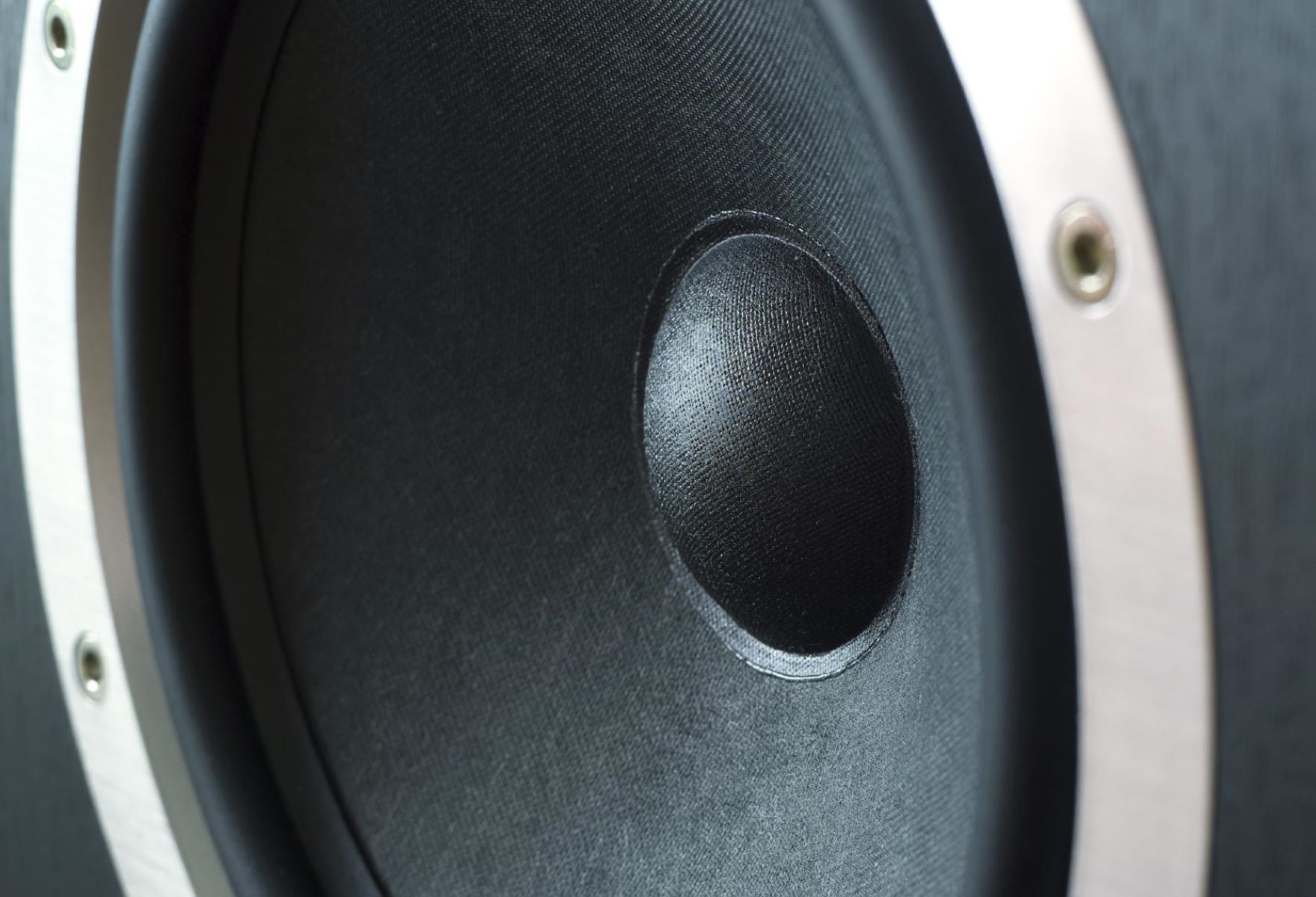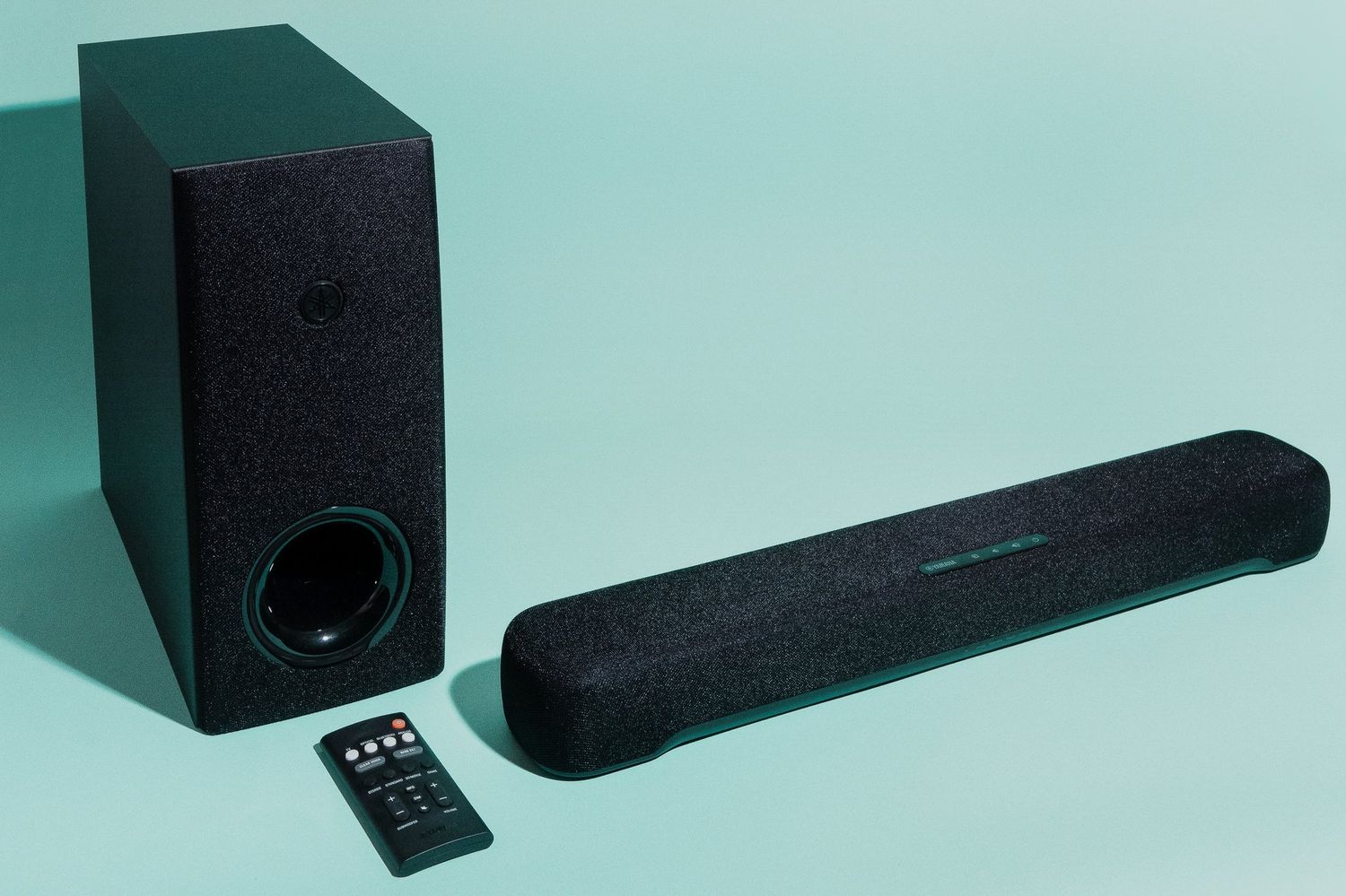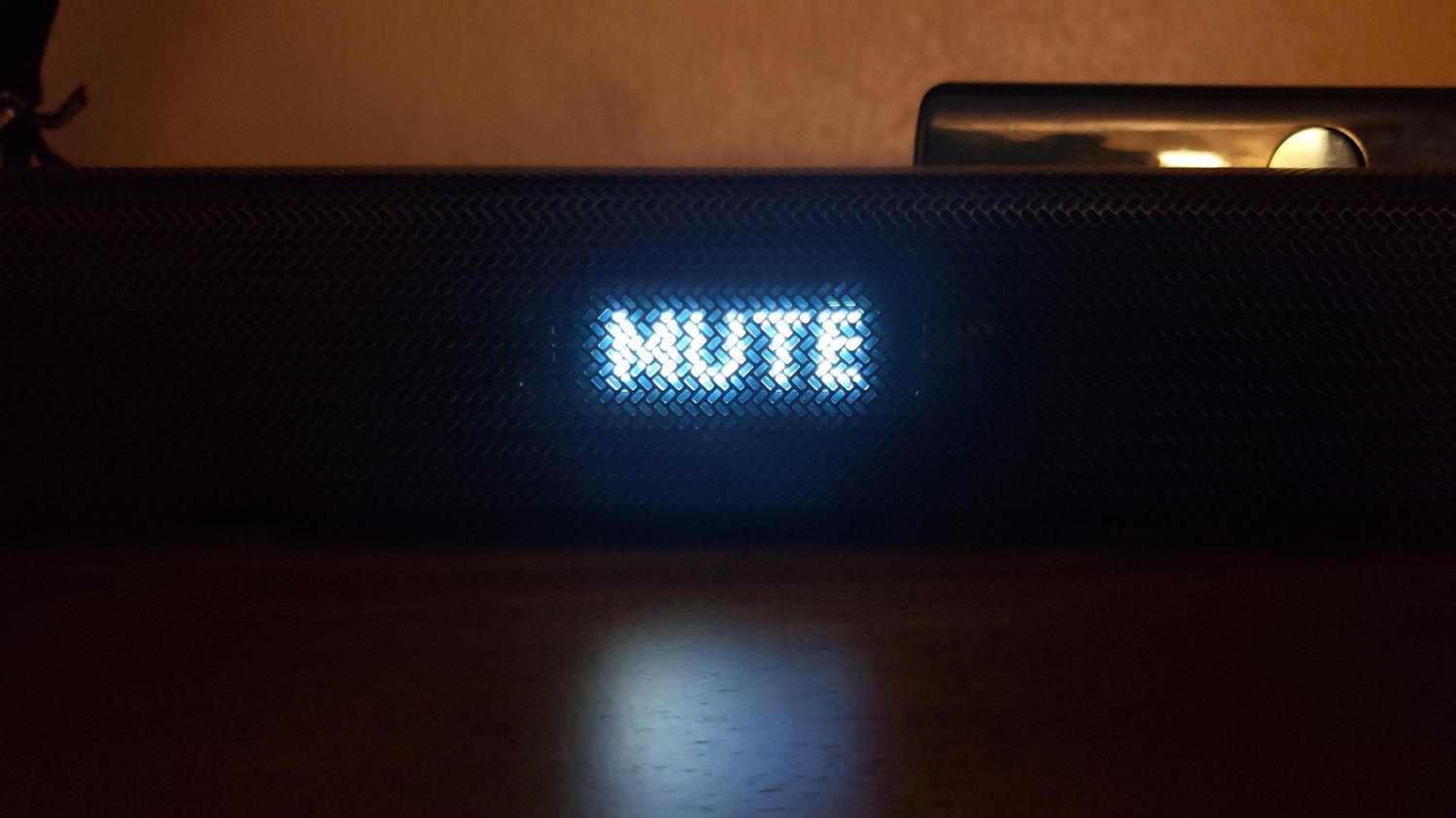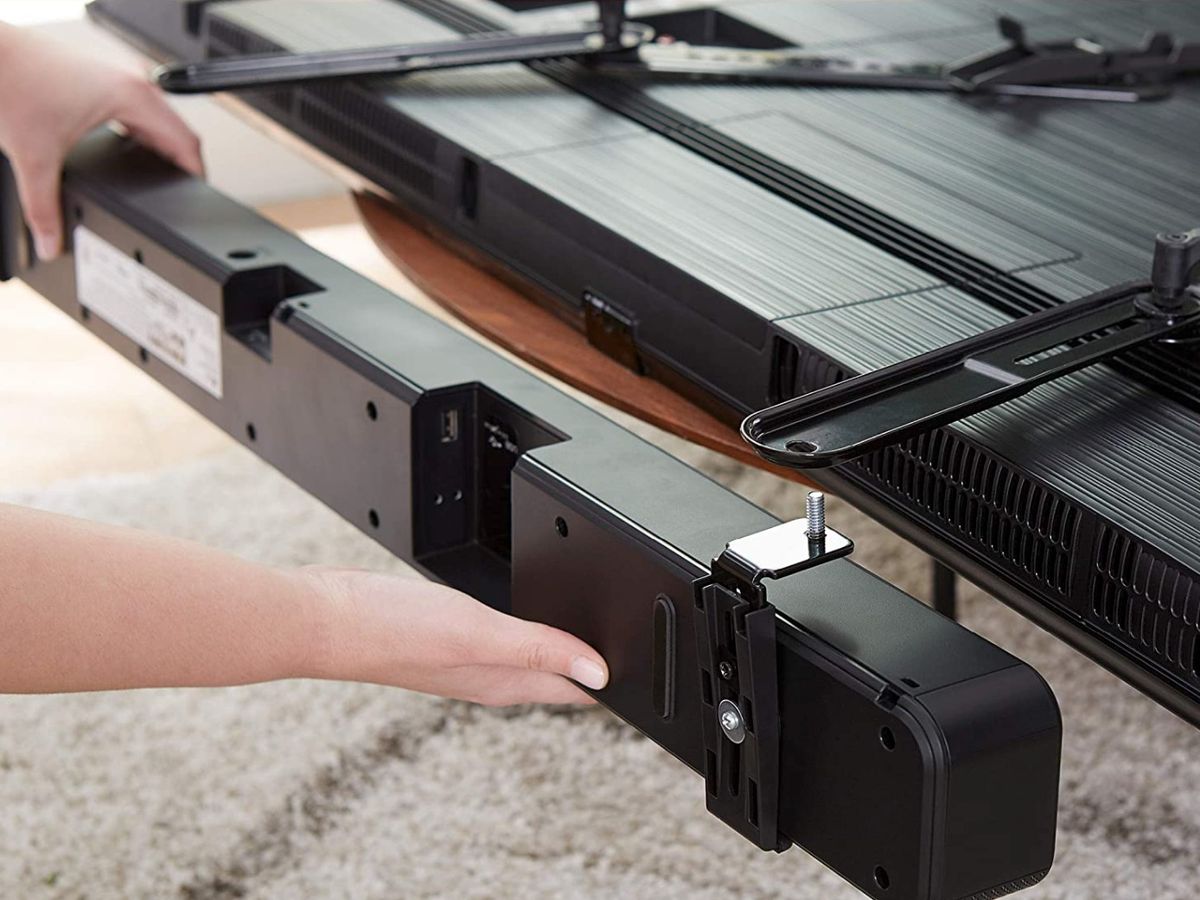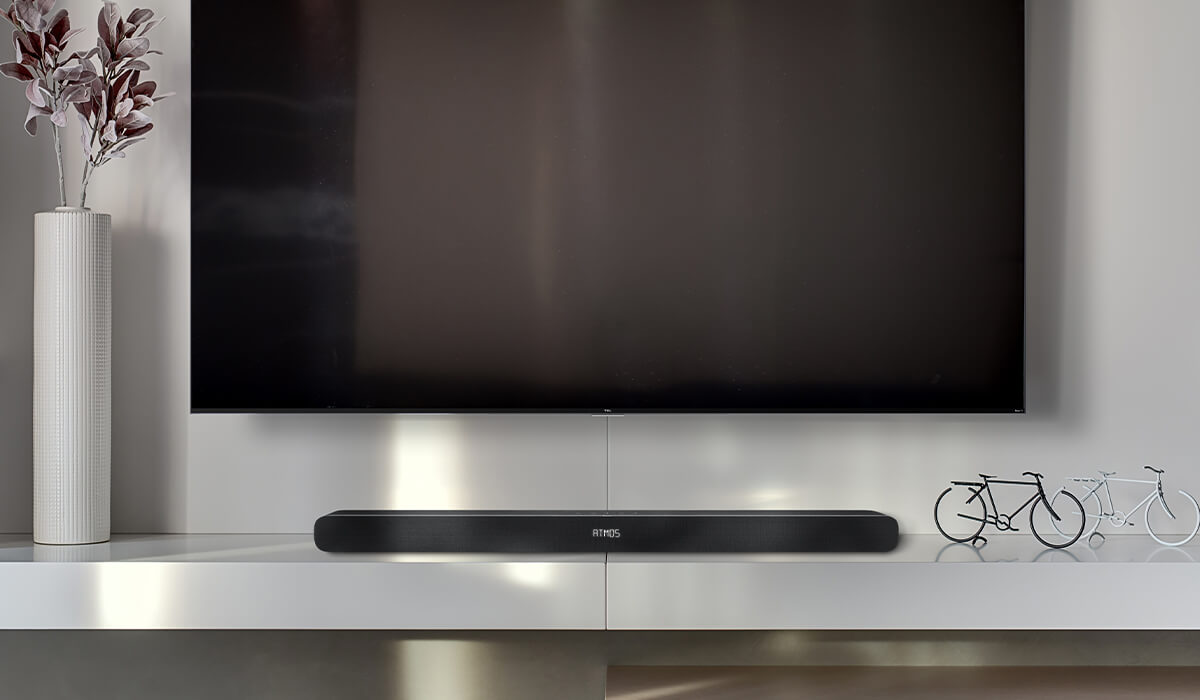Home>Production & Technology>Sound Bar>Why Is My Sound Bar Not Working With My TV


Sound Bar
Why Is My Sound Bar Not Working With My TV
Published: December 27, 2023
Having trouble with your sound bar not working with your TV? Find out possible reasons and solutions to get your sound bar up and running with your TV.
(Many of the links in this article redirect to a specific reviewed product. Your purchase of these products through affiliate links helps to generate commission for AudioLover.com, at no extra cost. Learn more)
Table of Contents
Introduction
When it comes to enjoying an immersive audio experience while watching TV, a sound bar is a popular choice for many. Sound bars are compact, sleek, and provide superior sound quality compared to standard TV speakers. However, there can be times when your sound bar may not work properly with your TV, leaving you frustrated and wondering what went wrong.
In this article, we will explore common issues that may arise when trying to connect a sound bar to a TV, as well as provide troubleshooting solutions for each problem. Whether you’ve recently purchased a new sound bar or are experiencing compatibility issues with an existing setup, this guide will help you find answers and get your sound bar working seamlessly with your TV.
We will look at possible issues such as connectivity problems, audio settings misconfigurations, outdated firmware, remote control malfunctions, compatibility concerns, and more. By following the steps outlined in this article, you’ll be able to diagnose and resolve most sound bar issues, allowing you to sit back, relax, and enjoy your favorite shows and movies with exceptional sound quality.
It’s important to note that sound bar models and TV brands can vary, so not all solutions may apply to your specific situation. However, the troubleshooting tips provided will give you a solid foundation to work from, enabling you to narrow down the problem and find a solution that suits your setup.
Now, let’s dive into the common issues that may cause your sound bar to not work with your TV and explore the steps to diagnose and resolve these problems.
Common Issues with Sound Bar and TV Compatibility
When setting up a sound bar with your TV, you may encounter certain compatibility issues that can affect the performance and functionality of your audio system. Understanding these common issues will help you troubleshoot and resolve any problems you may encounter. Let’s take a closer look at some of the most common issues:
- No Sound or Low Volume: One of the most frustrating issues is when you can’t hear any sound or the volume is too low. This can be caused by incorrect settings on either the TV or the sound bar, or a faulty audio cable connection. It’s important to check the audio settings on both devices and ensure the volume is turned up.
- Audio Sync Issues: If you notice that the audio is out of sync with the video, it can make your viewing experience unpleasant. This can occur due to delays in the sound bar processing the audio signal or latency issues with the TV. Adjusting the audio delay settings on the sound bar or TV can help resolve sync issues.
- Remote Control Problems: Sometimes, the sound bar’s remote control may not function properly, making it difficult to adjust settings or control the volume. This can be due to low battery power, a blocked infrared sensor, or a malfunctioning remote. Replace the batteries, ensure there are no obstructions between the remote and the sound bar, or try using a universal remote control as a workaround.
- Connectivity Issues: Issues with connectivity can prevent the sound bar from working with your TV. This can include problems with the HDMI or optical cable connections, incorrect input selection, or incompatible audio formats. Double-check the cable connections and ensure the correct input source is selected on the sound bar and TV. Additionally, verify that the audio formats supported by the sound bar are compatible with your TV.
- Compatibility Concerns: Not all sound bars are compatible with every TV model. Some sound bars may not work with certain TVs due to differences in audio output formats, input options, or control protocols. It’s essential to check the compatibility of the sound bar with your TV model before making a purchase.
These are just a few of the common issues you may encounter when trying to connect a sound bar to your TV. By understanding these challenges and knowing how to troubleshoot them, you can ensure a smooth and enjoyable audio experience.
Check the Connections
One of the first troubleshooting steps you should take when your sound bar is not working with your TV is to check the connections between the two devices. A loose or incorrect connection can lead to no sound, distorted audio, or other issues. Here’s what you should do:
- Check the Audio Cable Connections: Start by inspecting the audio cable connections between your sound bar and TV. If you are using an HDMI cable, ensure that it is securely plugged into both the HDMI ARC (Audio Return Channel) port on your TV and the corresponding HDMI ARC port on your sound bar. If you are using an optical cable, make sure it is firmly connected to both the TV’s optical audio output and the sound bar’s optical input.
- Verify the Power Connections: Ensure that both your TV and sound bar are properly plugged into power outlets and turned on. A power interruption or an improperly connected power cable can cause the sound bar to not function correctly.
- Check the Input Selections: Confirm that you have selected the correct input source on your sound bar and TV. Use the sound bar remote control or the TV’s audio settings menu to select the appropriate input option that corresponds to the connection you are using (HDMI ARC or optical).
- Inspect for Damaged Cables: Examine the audio cables for any signs of damage such as frayed wires or bent connectors. If you notice any issues, replace the cable with a new one. Damaged cables can interfere with the transmission of audio signals, resulting in poor sound quality or no sound at all.
- Restart Devices: Sometimes, a simple restart can resolve connectivity issues. Turn off both your TV and sound bar, unplug them from the power source, wait a few minutes, and then plug them back in. Power on the devices and check if the sound bar is now working with your TV.
By thoroughly checking and ensuring the proper connection between your sound bar and TV, you can eliminate connection-related problems and potentially resolve the issue. If the sound bar is still not working after checking the connections, move on to the next troubleshooting step.
Adjust the Audio Settings on the TV
If your sound bar is not working correctly with your TV, it is worth checking and adjusting the audio settings on your TV. Incorrect audio settings can cause issues such as no sound, low volume, or distorted audio. Follow these steps to adjust the audio settings on your TV:
- Access the Audio Settings: Using your TV remote control, navigate to the settings menu. Look for the audio or sound settings option and select it. The location and labeling of the audio settings may vary depending on the TV brand and model.
- Check Volume Settings: Verify that the volume level on your TV is turned up to an appropriate level. If the volume is set too low, you may not hear any sound even if your sound bar is working correctly.
- Enable HDMI ARC/CEC: If you are using an HDMI connection between your TV and sound bar, make sure that the HDMI ARC (Audio Return Channel) or HDMI CEC (Consumer Electronics Control) feature is enabled on both devices. This allows the sound bar to receive audio signals from your TV without the need for an additional audio cable.
- Adjust Audio Output Format: In the audio settings menu, you may find options to select the audio output format. Make sure the audio format selected is compatible with your sound bar and TV. Common audio formats include PCM, Dolby Digital, and DTS. Refer to your sound bar’s user manual to determine the supported audio formats. If the selected format is not supported, try changing it to a compatible option.
- Disable TV Speakers: Some TVs have built-in speakers that may still produce sound even when a sound bar is connected. To ensure that the TV’s internal speakers are not interfering with the audio output from the sound bar, go to the sound settings and disable the TV speakers. This will redirect all audio output to the sound bar.
After adjusting the audio settings on your TV, test the sound bar to see if the issue has been resolved. If not, move on to the next troubleshooting step.
Update the Sound Bar Firmware
If your sound bar is not working properly with your TV, there’s a possibility that it may have outdated firmware. Firmware is the software that controls the functionality of your sound bar, and updating it can often resolve compatibility issues and improve performance. Here’s how to update the firmware of your sound bar:
- Check the Manufacturer’s Website: Visit the official website of the sound bar’s manufacturer and look for the support or downloads section. Search for your specific sound bar model and see if there are any available firmware updates.
- Download the Firmware Update: If a firmware update is available, download it onto your computer or a USB flash drive, following the instructions provided by the manufacturer. Make sure to download the correct firmware for your sound bar model.
- Prepare the Sound Bar: If your sound bar has a USB port, connect the USB flash drive containing the firmware update to the sound bar. If not, follow the manufacturer’s instructions on how to update the firmware using alternative methods, such as connecting the sound bar to your computer via USB.
- Start the Firmware Update Process: Power on the sound bar and initiate the firmware update process, usually through the sound bar’s remote control or on-screen menu. Follow the on-screen prompts or refer to the user manual for specific instructions on updating the firmware.
- Wait for the Update to Complete: The firmware update might take a few minutes to complete. During this time, do not power off the sound bar or disconnect any cables. Wait until the update process finishes and the sound bar restarts.
After updating the firmware, test the sound bar to see if the issue has been resolved. If the sound bar is still not working with your TV, proceed to the next troubleshooting step.
Troubleshoot the Sound Bar Remote
If you’re facing issues with your sound bar not responding to the remote control commands, troubleshooting the remote is essential. Here are some steps you can take to identify and resolve problems with the sound bar remote:
- Check the Batteries: Ensure that the remote control has fresh batteries installed and that they are correctly inserted. Weak or depleted batteries can cause the remote to malfunction or not work at all.
- Clean the Remote: Over time, dust and debris can accumulate on the remote control’s buttons, interfering with its functionality. Use a clean, dry cloth or a soft brush to gently clean the remote, paying attention to the buttons and the infrared sensor.
- Reset the Remote: Some sound bar remotes have a reset button or a specific procedure to reset them. Refer to the user manual or the manufacturer’s website to find instructions on how to reset your sound bar remote. Resetting the remote can often resolve issues related to connectivity or button responsiveness.
- Try a Universal Remote: If the sound bar remote continues to malfunction or you cannot find a resolution, consider using a universal remote control as an alternative. Universal remotes are designed to work with a variety of devices, including sound bars. Ensure that the universal remote is compatible with your sound bar model and follow the programming instructions provided.
- Verify Line of Sight: Ensure that there are no obstructions between the remote control and the sound bar. Infrared remotes require a clear line of sight to function properly. Remove any objects that may be blocking the signal, and aim the remote directly at the sound bar.
If none of these troubleshooting steps resolve the issue with the sound bar remote, it may be necessary to contact the manufacturer’s customer support for further assistance or consider purchasing a replacement remote if available.
Now, let’s move on to the next troubleshooting step if the sound bar remote is not the culprit behind the issue.
Verify the Sound Bar’s Compatibility with the TV
When your sound bar is not working with your TV, it’s important to ensure compatibility between the two devices. Not all sound bars are compatible with every TV model, and using incompatible devices can lead to connectivity issues or limited functionality. Here’s how to verify the compatibility of your sound bar with your TV:
- Check the Sound Bar Specifications: Refer to the sound bar’s user manual or the manufacturer’s website to review the specifications of the device. Look for information regarding compatibility with different TV models, audio formats, and connectivity options.
- Check the TV’s Audio Output: Determine the audio output options available on your TV. Common options include HDMI ARC (Audio Return Channel) and optical audio output. Verify that your sound bar supports the same audio output as your TV.
- Confirm Audio Format Support: Different sound bars support various audio formats, such as PCM, Dolby Digital, or DTS. Ensure that the sound bar can handle the audio formats produced by your TV. This information can usually be found in the sound bar’s specifications or user manual.
- Consider Control Protocols: Some sound bars can be controlled using TV remote controls, while others require their dedicated remote. Check if your TV supports the remote control functionality for the sound bar or if you will need to use a separate remote for the sound bar.
- Research Compatibility Issues: Look for any reported compatibility issues between your sound bar model and the specific TV model you are using. Check online forums, customer reviews, or the manufacturer’s website for any known compatibility problems.
If you find that your sound bar is not compatible with your TV, you may need to consider alternative solutions. This could involve purchasing a different sound bar that is compatible with your TV or exploring additional audio connection options, such as using an audio extractor or a digital-to-analog converter.
Now that you’ve verified the compatibility between your sound bar and TV, let’s move on to the next troubleshooting step if the compatibility is not the root cause of the issue.
Reset the Sound Bar to Factory Settings
If you have exhausted all other troubleshooting options and your sound bar is still not working with your TV, resetting it to factory settings may help resolve any persistent issues. Resetting the sound bar will revert its settings back to the original configuration and can often resolve compatibility or performance problems. Here’s how to reset your sound bar:
- Locate the Reset Button: Check the user manual or the manufacturer’s website to find the location of the reset button on your sound bar. It is typically located on the back or bottom of the device. If your sound bar does not have a physical reset button, check the manual for alternative reset methods.
- Power Off the Sound Bar: Ensure that the sound bar is powered off and disconnected from any power source.
- Press and Hold the Reset Button: Press and hold the reset button using a small, pointed object such as a paperclip or a pin. Hold the button for about 10-15 seconds.
- Release the Reset Button: After holding the reset button, release it and wait for the sound bar to power back on. This may take a few moments.
- Set Up the Sound Bar: After the sound bar has restarted, you will need to set it up again. Follow the initial setup process outlined in the user manual, which typically involves selecting the appropriate input source, adjusting audio settings, and configuring any additional features.
Resetting the sound bar to factory settings can often resolve underlying issues and bring your sound bar back to its default state. After performing a factory reset, test the sound bar with your TV to see if the problem has been resolved.
If the factory reset does not solve the issue, it may be necessary to contact the sound bar manufacturer’s customer support or seek professional assistance to further diagnose and resolve the problem.
Now, let’s explore the final troubleshooting step if resetting the sound bar did not resolve the issue.
Contact Customer Support
If you have tried all the troubleshooting steps mentioned earlier and your sound bar is still not working properly with your TV, it may be time to reach out to the sound bar manufacturer’s customer support for further assistance. Here’s what you can do:
- Gather Product Information: Before contacting customer support, gather all the necessary product information, such as the model number, serial number, and purchase details. This will help the support team understand your specific sound bar model and any relevant warranty information.
- Visit the Manufacturer’s Website: Go to the sound bar manufacturer’s website and look for the support or contact section. Many manufacturers have dedicated support pages where you can find troubleshooting guides, FAQs, and contact information.
- Submit a Support Request: Fill out the support request form provided on the manufacturer’s website, providing as much detail as possible about the issue you’re experiencing with your sound bar. Be clear and concise in explaining the problem and include any steps you have already taken to troubleshoot.
- Reach Out via Phone: If the manufacturer provides a phone number for customer support, consider calling them directly. Be prepared to explain the issue to the support representative and provide the necessary product information.
- Utilize Social Media Channels: Many companies have active social media accounts where you can reach out for support. Send a direct message or post your query on their social media platforms as an alternative way to contact customer support.
- Follow Support Instructions: Once you’ve contacted customer support, follow their instructions for further troubleshooting or warranty-related processes. They may provide specific steps to perform or request additional information to help resolve the issue.
By contacting customer support, you can access expert assistance in diagnosing and resolving the issue with your sound bar. They may be able to provide further troubleshooting steps, arrange for repairs, or offer a replacement if your sound bar is under warranty.
Remember to be patient and provide all the information requested by the customer support team to help them better assist you. They are there to help resolve your issue and provide you with a satisfactory solution.
Now that you have reached out to customer support, you can rest assured that your sound bar issue is in the hands of professionals who can guide you towards a resolution.


